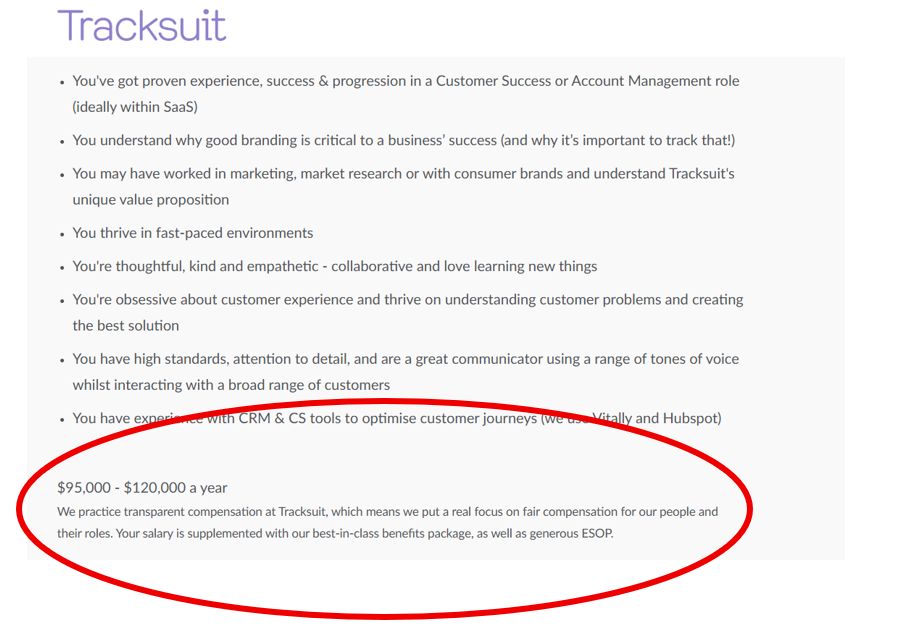
A New Zealand start-up's 'radical' approach to pay transparency

Every employee at the fast-growing New Zealand tech startup Tracksuit knows how much everyone else is paid.
“That's fairly radical. On the spectrum of pay transparency it’s almost at the very far end. The only thing more radical would be sharing it externally,” Tracksuit’s head of people Christine van Hoffen (pictured above) told HRD.
Tracksuit, which runs a brand tracking platform that provides consumer brands with easily accessible insights on performance, adopted the pay transparency policy from day one.
“It was the two co-founders [Connor Archbold and Matt Herbert] who were putting together how they wanted Tracksuit to operate and one of the big things they realised was that [pay] was probably the hardest conversation, that’s the thing people are the worst at talking about,” she said.
“If you are able to be like ‘hey, we don't have secrets, we're open about everything, including pay, which is super sensitive’ it sets the benchmark and the tone for everything else.”
van Hoffen says she is often told the policy worked only because the company was small and she admits it has become harder as the company heads towards 200 employees.
“But the fact it is harder doesn't mean that the reason we put it in place in the first place doesn't exist anymore,” she said.
“All of the problems with hiding people's pay and the inequalities that allows - none of those go away when you're bigger, so to me it doesn't make sense that we back off as we get bigger.”
At Tracksuit, being open about salaries starts in the recruitment phase, with all job ads including pay details – something job candidates want according to a recent survey by global recruitment platform Indeed. Unclear salaries were top complaint when applying for jobs but Indeed say only about 35% of job ads include pay.
An insights paper on pay transparency released by Korn Ferry earlier this month, said while momentum for pay transparency was regulatory led, it was also happening at a grass roots level.
“It’s no longer a question of ‘should we have pay transparency’, but ‘how are we going to deal with pay transparency’,” said Korn Ferry Total Rewards expert Emma Grogan at a recent rewards trends event in Sydney.
“Employees are saying, ‘we want pay transparency—and if you don’t give it to us, we’ll do it ourselves’.”
Despite this, only about 12% of global companies have a pay transparency strategy, and another 44% are working on it, according to Korn Ferry.
van Hoffen said the biggest challenge of pay transparency was also the most important part – the time spent having conversations about salaries.
She said there was no point having a "useless" policy that lets people see the salries but not being able to ask questions.
“It has no teeth unless you let people ask the question and so being open to people asking you questions about pay does take a lot of time because people care a lot about their own situation and naturally compare pay.
“It's really helpful because if we ever do have a salary discrepancy, it's been an oversight and knowing that the team will catch that and call us out is actually helpful when we're moving so fast.”
van Hoffen said the original rationale for the policy to make converations about pay easier had morphed into a way to make sure the business is held accountable for fairness.
For example, women returning from maternity leave could go in an check if their salary was affected by taking time off "because it shouldn't be", says van Hoffen, and this builds trusts.
She said the business was now looking at scaling the policy as the business grows to make it more standardised.
Despite the challenges, van Hoffen is determined to maintain the policy even as the company grows.
“It is one of my personal goals to see how long we can maintain it.”